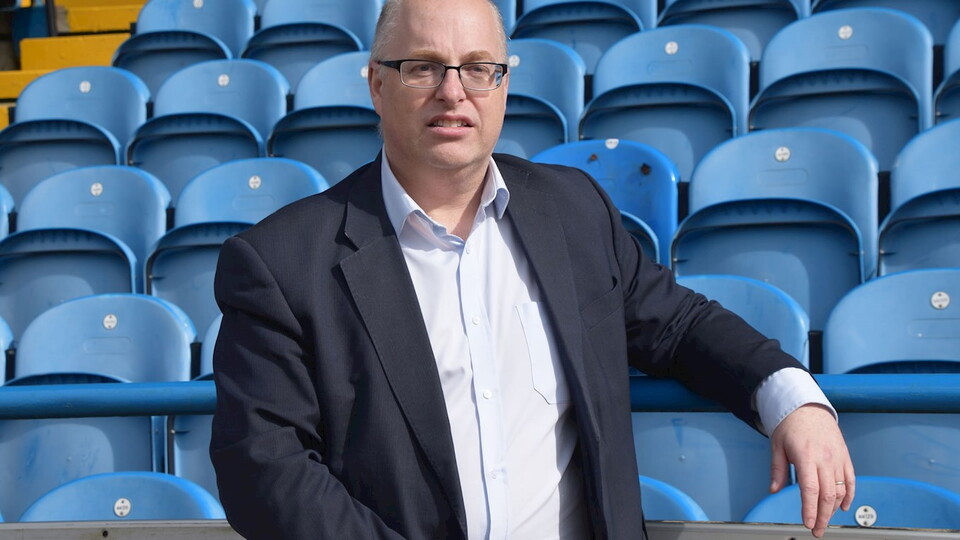The Brunton Park pitch makeover started in earnest on Wednesday with tractor units taking the top off the playing surface in preparation for the introduction of sand and seed later this week.
Favourable weather conditions should see the work completed quickly with chief executive Nigel Clibbens, on site for a visit with a structural engineer, confirming that season 20/21 is now the focus as we await a definite start date for the new campaign.
“Life has to go on, and there are aspects of what we do at the club which have to continue, regardless of Covid-19 and the situation with that,” he said. “That’s why we started the work on the pitch on Wednesday, because it’s quite simply work that needs to be done.
“The first stage is a scrape, to take the top 10-20mm off, and then Dave [Mitchell] will follow up with more work after that has been completed.
“Being honest, it’s not the work we would have ordinarily wanted to do, and I’m sure that Dave will tell you himself that he would want to do much more. He does a fantastic job, and it was actually in great condition during that period when we still weren’t sure if we had four games left to play on it or not.
“We would love to be able to spend more on it, both in terms of time and cash, and everyone knows that you have to invest in it if you want to have a decent playing surface. That’s why the real work for next season has started and, hopefully, with some good weather and the rest of the work still to come, it’ll be in first class condition for whenever it is that we do start playing again.”
“In terms of how much we do, we have a repairs and maintenance budget every season,” he explained. “We also have a CapEx budget which is for the extra stuff we do at the end of each year, and we always have it in mind that a bigger spend will be required for the pitch every four or five years, to allow us to do a wholesale renovation.
“We haven’t done one of those since the last flood, so we’re getting to the point where we’re due for that. What you find as you get to the end of that five-year cycle is that the effect the work you do between major renovations is less, and eventually it doesn’t matter how much you repair the pitch, it remains in a difficult state.
“That’s when clubs start to get in trouble with match postponements, because they find that their pitch can no longer handle the weather.”
With the work starting later than would normally be planned, he told us: “Our delay this season is because of Covid-19, and the need to tighten our belts but, as we’ve spoken about before, doing less because of that just means that we’ve temporarily pushed a problem further down the road.
“It will still have to be dealt with in the near future or the state of the pitch will deteriorate. We don’t want that, we’re proud of the work that Dave does and the recognition he and we get for it, so hopefully what he’s doing now will see us through this season and we can look at it again next summer.”
Most of Wednesday morning was taken up by an inspection of the stadium, which can often throw up some unexpected results.
“We’ve had the structural engineer here to do a visit and an inspection of the stadium, and we’ve been looking at what work might be required going forward, at the same time as reviewing the work that has been done in the past,” he said.
“With a stadium that’s ageing, as ours is, you see different issues crop up every year. I’ve talked endlessly in interviews about the challenges this stadium throws up for us. Those challenges bring extra cost burdens with them, but that’s something we have to manage.
“Touch wood no significant issues have come forward from this visit, so we’ll crack on with the points that have been highlighted over the next month so that we’re ready again for the start of next season.”
On the work that’s been done over the course of the last 14 weeks, since the lockdown was imposed, he said: “Most of the effort with the ground staff over the lockdown period has been to keep us treading water.
“There was such a long period of uncertainty about whether or not we’d be finishing last season’s games, and we had to make sure everything was in place and ready just in case we got the go ahead.
“That meant we weren’t able to do much other than make sure the training pitches and main pitch were ready to go, if and when they were called upon. I’m sure people can appreciate that’s actually a lot of work in itself and it takes up a huge amount of time.
“Having said that, and having walked round the whole stadium, to say that it hasn’t been used for three months – it’s actually in a fairly good state. That’s good, because it gives us a decent starting point from where we can pick things up once we get a decision on start dates for next season.
“There is a lot of work to do, but there always is with a building of this age and of this complexity. Haggis, one of our staff members, has been busy with his paint brush these last few weeks, and I think fans will notice that when they do come back.
“Unfortunately it’s a bit like painting the Forth Rail Bridge, it’s never ending, but we’re doing what we can with the hope that games will go ahead with fans inside the stadium. There’s no guarantees that will be the case, but we’ll certainly prepare and plan for that as the best case scenario.”

